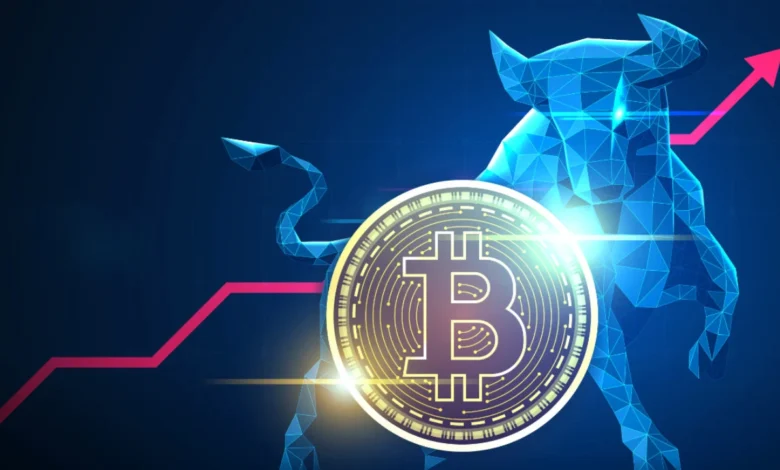ETH USDT Price Prediction for the Next Bull Run

The cryptocurrency market moves in cycles — long periods of growth followed by corrections and consolidation. For traders and investors, predicting how these cycles unfold can be the key to significant profits. Ethereum (ETH), the second-largest cryptocurrency by market capitalization, often plays a central role in these market upswings. And for many, the ETH USDT trading pair is the best way to measure and analyze Ethereum’s price behavior in real time.
As we look ahead to the next bull run, understanding what could drive Ethereum’s price — from network upgrades to macroeconomic shifts — can help traders make informed decisions. This article explores the potential path for ETH prices, the factors that may influence them, and realistic price targets for the coming market cycle.
1. The Nature of Crypto Bull Runs
A bull run is a period of sustained price increases, driven by positive sentiment, rising adoption, and increasing demand. In crypto, bull runs are often triggered by major technological developments, halving events, or new waves of investor participation.
Historically, every major bull market has been fueled by innovation and liquidity:
- 2013: Bitcoin’s first mainstream surge introduced crypto to the public.
- 2017: The ICO boom and Ethereum’s rise made headlines worldwide.
- 2021: DeFi, NFTs, and institutional investment pushed crypto valuations to all-time highs.
The next bull run will likely depend on Ethereum’s continued dominance in decentralized finance, scalability improvements, and macroeconomic factors such as inflation and institutional capital flows.
2. Why Ethereum Matters
Ethereum is more than just a cryptocurrency — it’s a platform for decentralized applications (dApps), smart contracts, and digital finance. The success of the entire Web3 ecosystem largely depends on Ethereum’s performance. From NFTs to DeFi protocols, much of the blockchain innovation still revolves around ETH.
Key strengths that make Ethereum vital:
- Smart Contract Functionality: The foundation of decentralized systems.
- Massive Developer Community: Thousands of projects are built on Ethereum.
- Transition to Proof-of-Stake (PoS): Reduced energy use and enhanced security.
- Growing Institutional Interest: ETH is increasingly viewed as a long-term investment, not just a speculative asset.
When investors trade ETH against USDT, they’re not just speculating on a coin — they’re betting on the future of the entire decentralized ecosystem.
3. The Role of ETH USDT in Price Tracking
The ETH USDT pair is one of the most traded in the world. It serves as a direct indicator of Ethereum’s strength against a stable, dollar-pegged asset. Since USDT mirrors the value of the U.S. dollar, this trading pair allows traders to track real-time ETH price movements without the volatility of fiat-to-crypto exchanges.
Most analysts and charting tools use the ETH/USDT pair as the reference for Ethereum’s global price index. It’s also the preferred pair for algorithmic trading and price prediction models because it’s liquid, stable, and consistent across platforms.
4. Historical Price Trends
Looking back at Ethereum’s price history gives us clues about its potential trajectory.
- 2016–2017: ETH surged from under $10 to over $1,400, marking its first major bull run.
- 2018–2019: A prolonged bear market followed, with ETH bottoming near $80.
- 2020–2021: Ethereum skyrocketed to over $4,800 amid DeFi and NFT explosions.
- 2022–2023: Macroeconomic tightening and crypto winter caused prices to fall below $1,000 before stabilizing.
These cycles show that Ethereum’s price typically multiplies several times during each bull phase before correcting significantly. The next rally could follow a similar pattern, albeit influenced by new dynamics.
5. Key Drivers of the Next Bull Run
Several fundamental and external factors could drive Ethereum’s next price surge:
A. Network Upgrades and Scalability
The transition to Ethereum 2.0 and rollup-based scaling solutions are already transforming the network’s performance. With faster transactions and lower fees, more users and developers will join, increasing demand for ETH.
B. DeFi and Layer 2 Expansion
Decentralized finance continues to grow rapidly. As more applications migrate to Layer 2 solutions like Arbitrum and Optimism, the use of ETH as gas and collateral will rise.
C. Institutional Adoption
Large institutions have started adding ETH to their portfolios. Spot Ethereum ETFs, once approved in major markets, could unleash billions in new capital inflows.
D. Global Liquidity Cycles
When central banks shift from tightening to easing policies, investors tend to move back into risk assets like crypto. Lower interest rates often spark renewed demand.
E. Supply Reduction
With staking and token burns through EIP-1559, Ethereum’s circulating supply is decreasing over time, potentially creating deflationary pressure — a strong bullish indicator.
6. Technical Analysis: Chart Patterns and Indicators
Technical traders rely on the ETH/USDT chart to forecast price movements. Here are key indicators to watch:
- Support and Resistance Levels: Key price zones where ETH historically reverses or breaks out.
- Moving Averages (MA50, MA200): Crossovers often indicate major trend shifts.
- Relative Strength Index (RSI): Helps identify overbought or oversold conditions.
- Volume Profile: High trading volume at specific levels shows where traders are most active.
If ETH maintains strong support above major moving averages, it could signal the beginning of a bullish phase.
7. On-Chain Metrics Supporting Growth
Beyond charts, blockchain data offers valuable insights:
- Active Addresses: An increase suggests more network activity and adoption.
- Staking Participation: Rising staked ETH indicates investor confidence.
- Gas Fees: While high fees can signal congestion, they also reflect high demand.
- Exchange Balances: Declining ETH balances on exchanges indicate accumulation by long-term holders.
When these metrics align, they often precede major price rallies.
8. Expert and Analyst Predictions
Various analysts and research firms have shared projections for Ethereum’s next bull cycle:
- Conservative Estimates: ETH could reach $5,000–$6,000 by the next market peak.
- Moderate Outlooks: Some analysts expect $8,000–$10,000 based on network growth and institutional inflows.
- Optimistic Scenarios: If global adoption accelerates, ETH might touch $15,000 or beyond within the next few years.
While these are speculative, they demonstrate the wide range of expectations within the crypto community.
9. The Role of Macro Trends
Ethereum doesn’t exist in a vacuum. Macroeconomic factors heavily influence its price:
- Interest Rates: Lower rates generally increase risk appetite.
- Inflation Trends: Crypto often acts as a hedge against inflationary environments.
- Global Regulations: Clarity around Ethereum’s legal status could boost institutional participation.
- Dollar Strength: Since ETH is traded in pairs like ETH/USDT, a weaker dollar often corresponds with stronger crypto markets.
Understanding these macro trends helps investors time their entries and exits more effectively.
10. Risk Factors to Consider
Even with bullish potential, ETH remains a volatile asset. Traders must stay aware of risks such as:
- Regulatory Changes: Sudden policy shifts can impact liquidity or restrict access.
- Technological Risks: Bugs or delays in network upgrades could undermine confidence.
- Competition: Rival blockchains like Solana or Avalanche continue to innovate.
- Market Corrections: Sharp pullbacks are common even during bull markets.
A balanced approach that combines optimism with risk management is essential for long-term success.
11. Long-Term Scenarios for Ethereum
Let’s imagine three possible future outcomes:
A. Base Case
Ethereum continues to dominate DeFi and NFTs. Prices rise gradually to around $7,000–$8,000 as adoption grows steadily.
B. Bullish Case
Mass adoption of Layer 2 solutions and Ethereum-based applications leads to a major capital inflow. ETH surpasses $10,000 and approaches $15,000 during peak cycle euphoria.
C. Bearish Case
Regulatory hurdles or macroeconomic headwinds delay adoption, keeping ETH in the $2,000–$3,000 range for an extended period.
While these scenarios differ, the underlying strength of Ethereum’s ecosystem makes a positive long-term outlook more probable.
12. Practical Tips for Traders and Investors
If you’re planning to trade or invest in Ethereum during the next bull run:
- Use Reliable Exchanges: Choose trusted platforms with strong liquidity for ETH/USDT trades.
- Diversify: Don’t put all your capital in one asset — balance between ETH and stablecoins.
- Stay Informed: Follow Ethereum upgrade announcements and global crypto news.
- Take Profits Gradually: Avoid emotional decision-making by setting clear targets.
- Consider Staking: Earn passive income while holding ETH long-term.
Being disciplined and data-driven can make the difference between profit and panic during volatile times.
13. Conclusion
The ETH USDT pair remains the cornerstone of Ethereum trading and one of the best indicators of market sentiment. As the next bull run approaches, a combination of network innovation, institutional adoption, and favorable global trends could push ETH prices to new all-time highs.
While no one can predict the future with absolute certainty, Ethereum’s proven resilience and expanding ecosystem suggest that the coming years may be some of its most transformative yet. For traders and investors alike, understanding ETH/USDT trends and macroeconomic influences will be crucial to capturing opportunities in the next market cycle.





